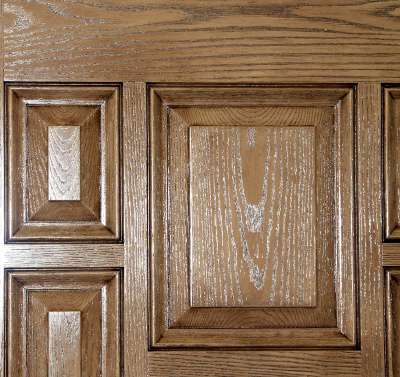| |
|
|

|
|
The first glaze coat shown here was dark and strong in color yet thin in consistency. I wanted to get the grain to "pop out" as much as possible with the first glazing and bring the base or background color closer to the sample. After the glaze was "worked" into the grain and crevices of the moldings and had set up well, I wiped most of it off the surface with a soft cotton rag and re-brushed lightly to even out any splotchy areas. Then applied the first top coat. I consulting with the customer before accepting the job I found out that the door would be exposed to full sun and all the elements bad weather can offer. This meant that the colors needed to be as UV resistant as possible and the finish had to be water proof. Most of the work that restoration shops do is not for exterior application. Here are a few tips that will give your customer a better longer lasting job and you a great reputation. Colors are derived from to main sources, mineral and organic. All mineral derived colors (earth tones like black, browns, and tans) are mostly UV color fast. Organic derived colors ( like reds, yellows and oranges) will fade, some quickly, when exposed to UV light. Keep this in mind when your mixing any colors that will get direct sunlight. Urethanes and Spar varnishes are booth good water proof finishes that can be used for outdoors applications. However Urethanes are very clear and act as a glass magnifying the sunlight and UV rays. Spar varnish has a dark amber tint that absorbs UV light. So, can you guess what the top coating material I used for this application was? |
Copyright by Steve Nearman
(The Master's Touch - FurnitureRepair.net) 2003- all rights
reserved. No part of this web site can be reproduced in any form without
written permission.
Terms of
Use